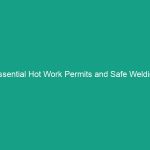Good Morning Team!
Today, we’re going to talk about a topic that affects us all during the winter months: shoveling snow. As we all know, snow accumulation can create Hazards not just on the roadways but also in our workplace environments. It’s crucial to understand the essential guidelines for shoveling snow to avoid common Safety risks. Let’s dive into why this topic is important for Workplace Safety and how we can protect ourselves and our colleagues.
Understanding Essential Shoveling Snow Guidelines
Shoveling snow might seem like a straightforward task, but it comes with its own set of risks and challenges. The essential shoveling snow guidelines revolve around minimizing these risks, ensuring our Safety while performing this necessary chore. Employees often underestimate the physical demands of shoveling snow, which can lead to severe injuries, including back strain, heart attacks, and slips and falls.
Understanding these guidelines is crucial because improper techniques can lead to both short-term injuries and long-term health issues. Many people believe that as long as they are careful, they won’t face any risks. However, the reality is that even the most careful individuals can overlook critical safety practices.
Key Hazards, Risks, and Safety Considerations
When it comes to shoveling snow, several key hazards and risks can pose serious threats:
- Physical Strain: Shoveling is a strenuous activity that can lead to muscle injuries, particularly in the back and shoulders.
- Heart Attacks: Cold weather combined with physical exertion can increase the risk of cardiovascular events.
- Slips and Falls: Snow and ice can create slippery conditions, leading to falls and injuries.
- Improper Equipment: Using the wrong type of shovel or not maintaining equipment can increase the risk of injury.
Ignoring safety protocols can result in real-world consequences such as lost workdays, medical expenses, and even long-term health issues. It’s essential to remain vigilant and prioritize safety during snow removal tasks.
Best Practices, Procedures, & Actionable Advice
To ensure safety while shoveling snow, here are some Best Practices to follow:
1. Warm Up Before Shoveling
Just like any physical activity, warming up is essential. Take a few minutes to stretch your muscles before heading out to shovel. Focus on your back, shoulders, and legs to prepare them for the work ahead.
2. Use the Right Equipment
Invest in a good-quality snow shovel. Look for one that is lightweight and has a curved handle to reduce strain on your back. If possible, use a snow blower for larger areas.
3. Maintain Proper Posture
When shoveling, keep your back straight and bend at your knees. This technique helps distribute the weight evenly and reduces the risk of back injuries. Always lift with your legs, not your back.
4. Take Breaks
Don’t try to shovel too much at once. Take regular breaks to rest and hydrate. This practice is crucial in preventing overexertion, especially in cold weather.
5. Shovel Early and Often
If possible, shovel snow as soon as it falls. This approach prevents heavy accumulations and makes the task easier and safer. If you wait too long, the snow can become heavy and compacted, increasing the risk of injury.
6. Watch Your Step
Be mindful of your footing. Look for icy patches or other hazards before stepping. If necessary, use salt or sand to improve traction on slippery surfaces.
7. Ask for Help
If the snowfall is too heavy or if you’re unsure about your ability to shovel safely, don’t hesitate to ask for help. Teamwork can make the task easier and safer.
Case Study
In a recent incident at a nearby facility, an employee suffered a severe back injury while shoveling snow due to improper lifting techniques. This injury resulted in weeks of missed work and costly medical bills. By following the essential shoveling snow guidelines, this injury could have been avoided.
Regulations, Standards, and Compliance
It’s important to be aware of relevant Regulations and Standards regarding Workplace Safety during snowy conditions. OSHA, for example, emphasizes the need for employers to provide a safe working Environment. This includes ensuring that employees have the necessary Training and equipment for snow removal tasks.
Compliance with these regulations is critical, as it not only protects employees but also reduces liability for the company. Ensuring safety during snow removal helps maintain productivity and morale, ultimately benefiting everyone involved.
Employee Engagement & Discussion
Now, I’d like to open the floor for discussion. What safety challenges have you encountered related to shoveling snow? Have you experienced any close calls or injuries? Sharing our experiences can help us all learn and improve our safety practices.
Conclusion & Key Takeaways
In conclusion, winter weather brings unique challenges, and knowing the essential shoveling snow guidelines is key to preventing injuries and ensuring Workplace Safety. Remember to warm up, use the right equipment, maintain proper posture, take breaks, shovel early, watch your step, and ask for help when needed.
By applying these practices, we can create a safer work environment for everyone. Thank you all for your attention and commitment to prioritizing safety during this winter season. Let’s keep each other safe!


